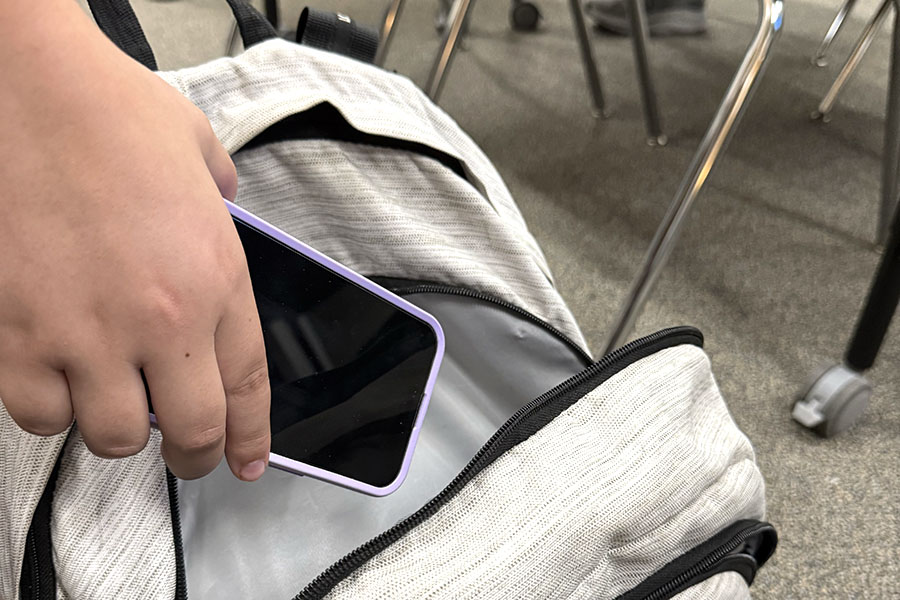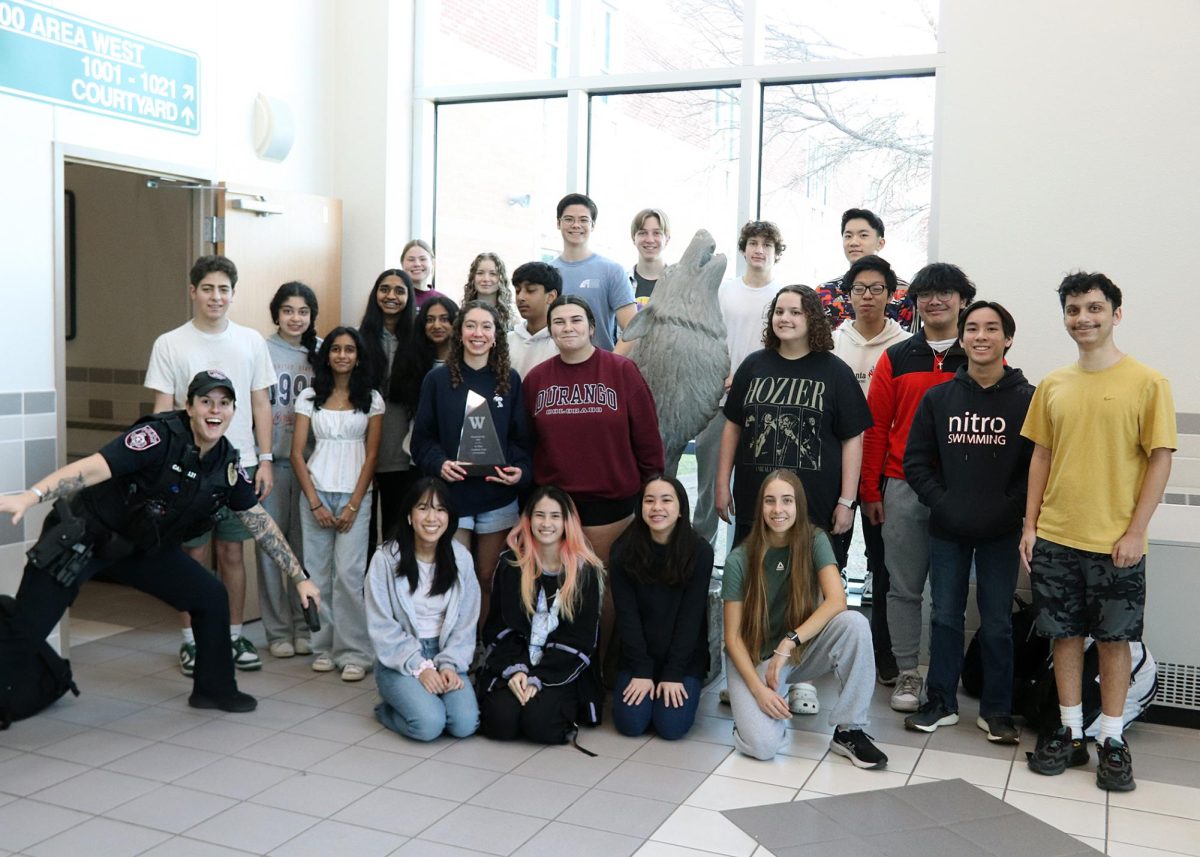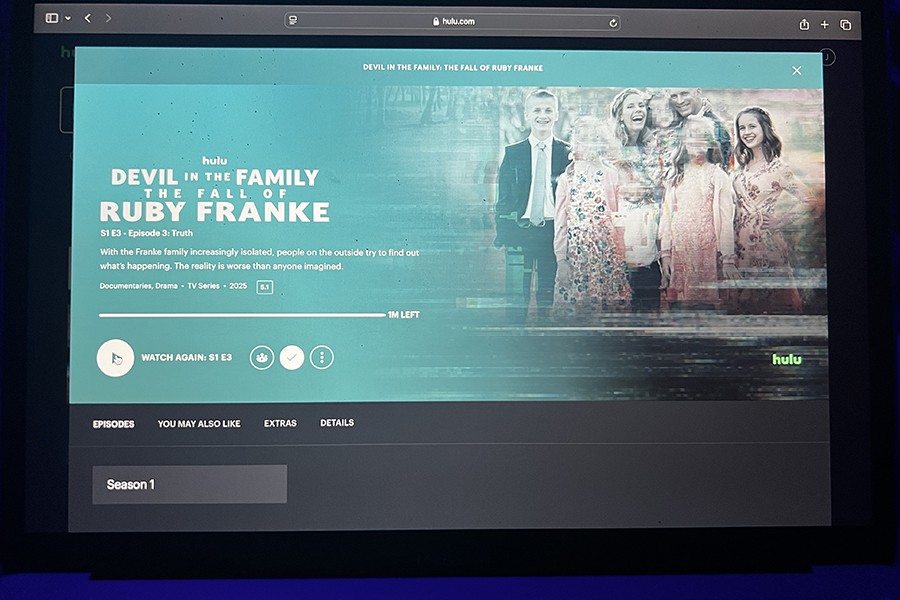Arsenic and lead and phthalates, oh my! These days, children are in much more danger of getting poisoned than they are of being eaten by lions and tigers and bears.
A third of 1,500 toys tested were found to have medium to high levels of dangerous chemicals, such as lead. The liable corporations, such as Mattel Inc., used lead paint instead of a safe paint because it’s cheaper, despite being aware of lead’s toxicity.
“I don’t understand why companies think putting lead in products is a good idea, if they know how dangerous it is,” Anastasia Belock, sophomore, said.
Because the responsible Chinese officials were aware of the danger, they were executed.
An additional repercussion of the lead scare is the U.S. Consumer Product Safety Improvement Act (CPSIA), active February 10, 2009. It requires every product intended for kids 12 years old and younger be tested for lead and six certain phthalates, and that each product carries a certificate proving that it passed the tests. The phthalates ban only applies to products made on or after February 10, 2009, but the lead ban is retroactive. This means that untested kids’ products are illegal, regardless of when they were made. Restrictions on the amount of lead a product can contain will decrease gradually. Currently any accessible part of a product cannot have more than 600 parts of lead per million. On August 14, 2009, this number will drop to 300 ppm, and 100 ppm later on. Kids’ products also cannot contain more than 0.1 percent of the six phthalates. The law applies to kid’s products and child care articles imported, manufactured for sale, sold, and traded.
“I think it’s brilliant,” Caitlin Easley, freshman, said. “I’m tired of hearing things on the news about kids swallowing things and becoming poisoned. It’s a pain for the parents, and the toy manufacturers. If the FDA must test anything we consume, then toys and other things should be tested as well. I mean, kids put absolutely everything in their mouths.”
However, there is debate over whether the CPSIA is beneficial or not because it could easily put small artisan toymakers out of business, due to the expense and impracticality of testing every toy they make. As the CPSIA is written right now, all toys are required to be tested even if the materials that the toy was made from had already been tested and approved.
“It seems very hard to follow through with,” Eric Johnson, junior, said.
The CPSIA encompasses much more than just toys— kids’ clothes, furniture, and books all have strict regulations now. Clothes intended for kids age 12 and under containing metallic thread, Swarovski crystals (almost completely lead), or plastic parts are required to be tested for lead. These items intended for children age three and under are required to be testing for phthalates as well. Books printed before 1985 are now banned, a precaution against the possibility of lead paint used in the illustrations.
“I think they’re being scared,” Ben Shaw, junior, said.
Another weakness of the CPSIA is that resale shops are not required to test their products already in inventory, but are also not allowed to sell items that exceed the 600 ppm of lead. If they do sell such products, they could face criminal and/or civil penalties. The CPSIA could even affect the average citizen by making it illegal to sell untested kids’ items at yard sales.
“Anything used… could possibly be illegal, meaning you must buy name-brand corporate crap for your kids,” David Jacobson, freshman, said.
Because of this, legislation to amend the CPSIA is currently being reviewed. The amendments would allow small toymakers to use the certification from their previously tested materials instead of testing their finished product. The proposal would also exempt resellers from the rules and prevent the CPSIA from being enforced on products made before the law was passed.
Many people hope that the CPSIA will be amended to be less strict on small companies, making it possible for them to stay in business. The merits and drawbacks of the CPSIA will be debated until a final decision is made, a time greatly anticipated by U.S. citizens.



![Jumping off the ground, senior linebacker Bennett Patton snatches the ball out of the air for an interception at Thursday’s game against Chaparral. Patton had two interceptions in the 56-14 victory, tying the school record for interceptions in a game. “I was just playing the game,” Patton said. “[I’m] going to go into next week, forget about it and stay humble.” Photo by Harper Chapman](https://cphswolfpack.com/wp-content/uploads/2025/09/bennett-interception.jpg)
![The fire department came to the school after students were evacuated when smoke started coming from the ceiling of a classroom. All students and staff are safe. “All of my friends left their stuff too, so we couldn’t contact our parents, and it was stressful,” senior Brynn Fowler said. “It was scary because I didn’t know [what was going on], and I couldn’t find anyone because it was a big crowd.” Photo by Anthony Garcia](https://cphswolfpack.com/wp-content/uploads/2025/09/firetruck.jpg)


![Sitting with her friend senior Sohpia Struve at last year’s Austin City Limits Festival, senior Ava Zuniga poses for a picture under a pavilion. They are frequent attendees at ACL, an annual music festival at Zilker Park. “I would recommend seeing a bunch of people,” Zuniga said. “This past year, we camped out for Chappell [Roan] for a really long time. I think the whole point of ACL, [which] is a lot of fun, is that you can go see so many different people, even if you don’t know them. So by camping by one person, it really limits yourself from being able to go see a bunch of people.” Photo courtesy of Ava Zuniga](https://cphswolfpack.com/wp-content/uploads/2025/10/EE9E9484-FE6F-4AA0-B5F5-0C177AB32841-1200x857.jpeg)
![Broadcast, yearbook and newspaper combined for 66 Interscholastic League Press Conference awards this year. Yearbook won 43, newspaper won 14 and broadcast took home nine. “I think [the ILPC awards] are a great way to give the kids some acknowledgement for all of their hard work,” newspaper and yearbook adviser Paige Hert said. “They typically spend the year covering everyone else’s big moments, so it’s really cool for them to be celebrated so many times and in so many different ways.”](https://cphswolfpack.com/wp-content/uploads/2025/05/edited-ILPC.jpg)




![Looking down at his racket, junior Hasun Nguyen hits the green tennis ball. Hasun has played tennis since he was 9 years old, and he is on the varsity team. "I feel like it’s not really appreciated in America as much, but [tennis] is a really competitive and mentally challenging sport,” Nguyen said. “I’m really level-headed and can keep my cool during a match, and that helps me play a bit better under pressure.” Photo by Kyra Cox](https://cphswolfpack.com/wp-content/uploads/2025/09/hasun.jpg)


![Bringing her arm over her head and taking a quick breath, junior Lauren Lucas swims the final laps of the 500 freestyle at the regionals swimming competition on date. Lucas broke the school’s 18-year-old record for the 500 freestyle at regionals and again at state with a time of 4:58.63. “I’d had my eye on that 500 record since my freshman year, so I was really excited to see if I could get it at regionals or districts,” Lucas said. “ State is always a really fun experience and medaling for the first time was really great. It was a very very tight race, [so] I was a bit surprised [that I medaled]. [There were] a lot of fast girls at the meet in general, [and] it was like a dogfight back and forth, back and forth.” Photo by Kaydence Wilkinson](https://cphswolfpack.com/wp-content/uploads/2025/03/Kaydence-2.7-23-edit-2.jpg)
![As the support team sits and poses for a photo in the cafeteria with the counseling team they eagerly wait to start their day. "We [all] seem to be a team, I get up every day and there's days where I don't want to go to work today, but I'm thankful that I have a job and I'm blessed to have what I have," Christopherson said. Photo Courtesy of Julie Weltens.](https://cphswolfpack.com/wp-content/uploads/2025/01/AF9E8470-10D7-4C91-BF28-EC8F86BAB66C-1200x852.jpeg)
![Officer Stephanie Cash is in her second year as an SRO at CPHS. “Seeing [students] grow over the years has been kind of cool,” Officer Cash said. “Freshmen that [are] all over the place and then in the next couple of years get a little more squared away and go to class and do work and start thinking about the future. Being a part of a student's growth is the best way to measure my success as an SRO.” Photo Courtesy of Cedar Park Police Department's PIO, Alicia Gallagher.](https://cphswolfpack.com/wp-content/uploads/2024/12/CPHS-SRO-900x1200.jpg)
![As he sprints with the ball, senior running back Trae Hill breaks a tackle during Friday’s 35-14 loss against the Vandegrift Vipers. Hill ran for 135 yards and two touchdowns during the game. “[Scoring] was electric,” Hill said. “It always feels good to score, but the O-line did everything.”](https://cphswolfpack.com/wp-content/uploads/2025/09/IMG_0795allie.varfb_-1200x799.jpg)














